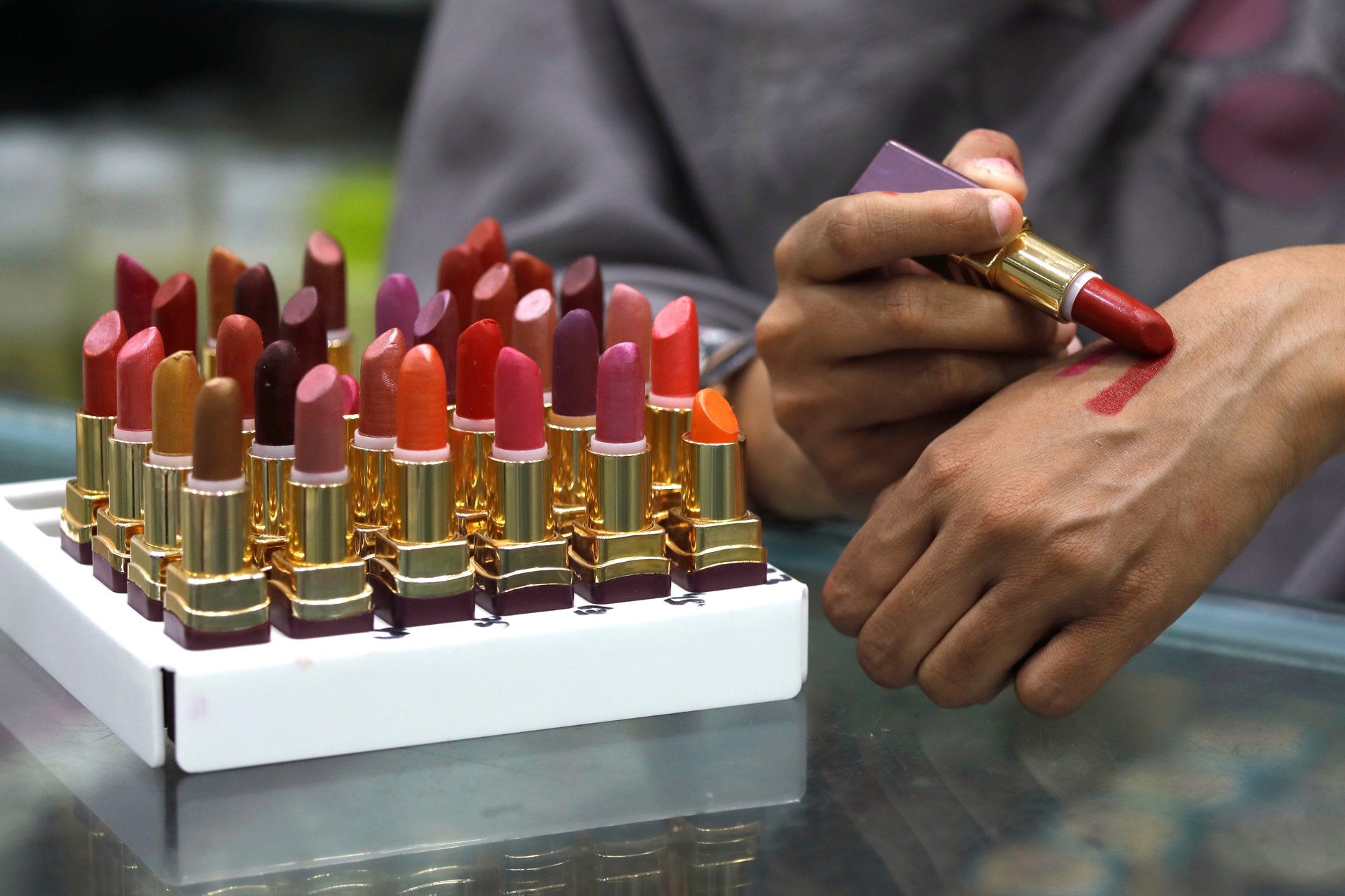It is time for the “lipstick index” to go away for good
During dire economic times, lipstick sales spike—or so goes the logic of the “lipstick index,” a shorthand to gauge consumer spending. When more extravagant luxuries seem out of reach, the index suggests, lipstick is an affordable treat.


During dire economic times, lipstick sales spike—or so goes the logic of the “lipstick index,” a shorthand to gauge consumer spending. When more extravagant luxuries seem out of reach, the index suggests, lipstick is an affordable treat.
That economic indicator hasn’t held up during the current pandemic-induced recession. Makeup sales have tanked up to 30% globally this year, according to a May report from McKinsey & Company. And lipstick in particular has suffered; according to the same report, Amazon sales of lip care and color dropped 15% from the year prior in the four weeks ending in April 11, the biggest drop of any category.
Lipstick sales are on track to fall far short of their 2019 numbers; between January and June, lip color brought in just $135.7 million for prestige beauty brands, compared to $541.5 million during all of 2019.
Few people are going anywhere that requires makeup, and if they are, they’re wearing a mask that covers their mouth. But that’s not the only reason the lipstick index has lost its luster.
Christened in 2001 by Leonard Lauder, then-CEO of makeup company Estée Lauder, the index was inspired after his own company’s lipstick sales reportedly spiked during that year’s recession. Some trace the idea back even further, to a boom in makeup sales during the Great Depression. A 2012 study corroborated the idea, though its authors attested the phenomenon to “women’s desire to attract mates with resources.”
Sexist rationales aside, the lipstick index seems real—or, at least, maybe it did at the time of its creation. But in recent years, journalists and economists have debunked the metric: The data simply didn’t corroborate it. In 2009, the year after the start of the Great Recession, lipstick sales declined by nearly 10%, according to Fortune, instead of rising as the index might have predicted.
Some analyses have suggested that nail polish, or mascara, or face masks, or candles, have become more popular as inexpensive pick-me-ups during an economic downturn. This is especially true during the pandemic, during which lipstick has become less relevant than ever. The items people use to indulge in self-care are now too varied to offer a single indicator of economic health, though spending on some other products, such as cheap groceries and fast food, might be more revealing.
So maybe, finally, it’s time for market analysts to let the lipstick index go. Overall consumer spending may be a less sexy metric, but it’s a better real-time economic indicator.